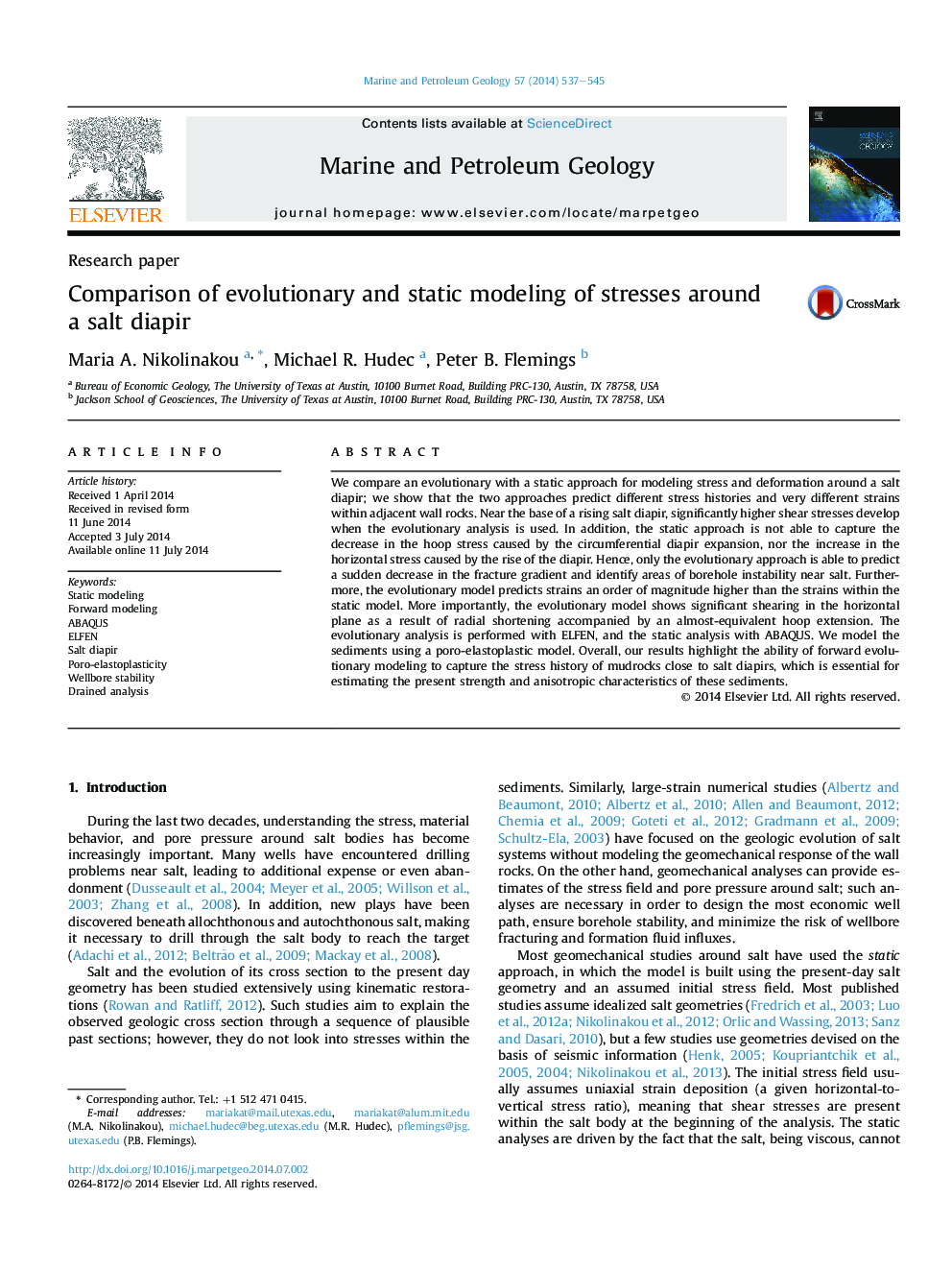| Article ID | Journal | Published Year | Pages | File Type |
|---|---|---|---|---|
| 6435395 | Marine and Petroleum Geology | 2014 | 9 Pages |
â¢Comparison of evolutionary and static geomechanical modeling.â¢Evolutionary approach predicts higher shear stresses.â¢Evolutionary approach identifies borehole instabilities.â¢Evolutionary approach predicts high differential strains.
We compare an evolutionary with a static approach for modeling stress and deformation around a salt diapir; we show that the two approaches predict different stress histories and very different strains within adjacent wall rocks. Near the base of a rising salt diapir, significantly higher shear stresses develop when the evolutionary analysis is used. In addition, the static approach is not able to capture the decrease in the hoop stress caused by the circumferential diapir expansion, nor the increase in the horizontal stress caused by the rise of the diapir. Hence, only the evolutionary approach is able to predict a sudden decrease in the fracture gradient and identify areas of borehole instability near salt. Furthermore, the evolutionary model predicts strains an order of magnitude higher than the strains within the static model. More importantly, the evolutionary model shows significant shearing in the horizontal plane as a result of radial shortening accompanied by an almost-equivalent hoop extension. The evolutionary analysis is performed with ELFEN, and the static analysis with ABAQUS. We model the sediments using a poro-elastoplastic model. Overall, our results highlight the ability of forward evolutionary modeling to capture the stress history of mudrocks close to salt diapirs, which is essential for estimating the present strength and anisotropic characteristics of these sediments.
Graphical abstractDownload full-size image
